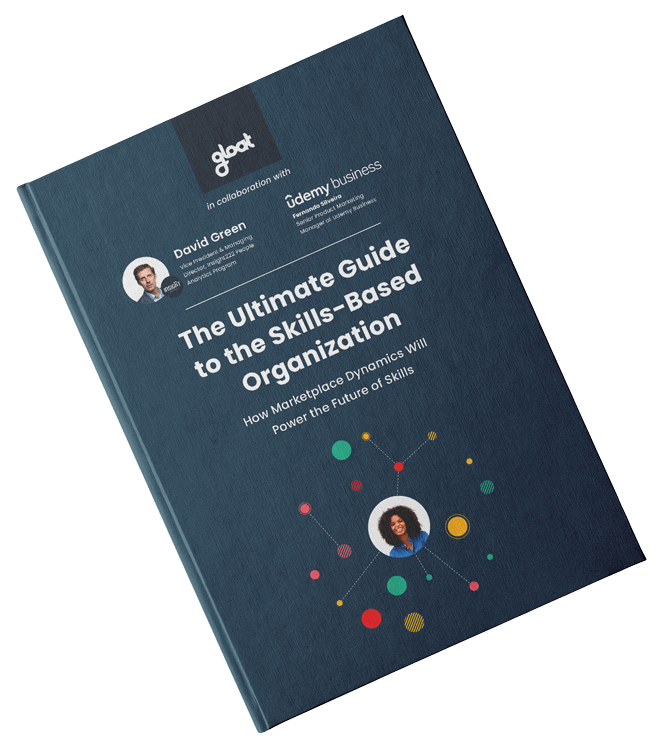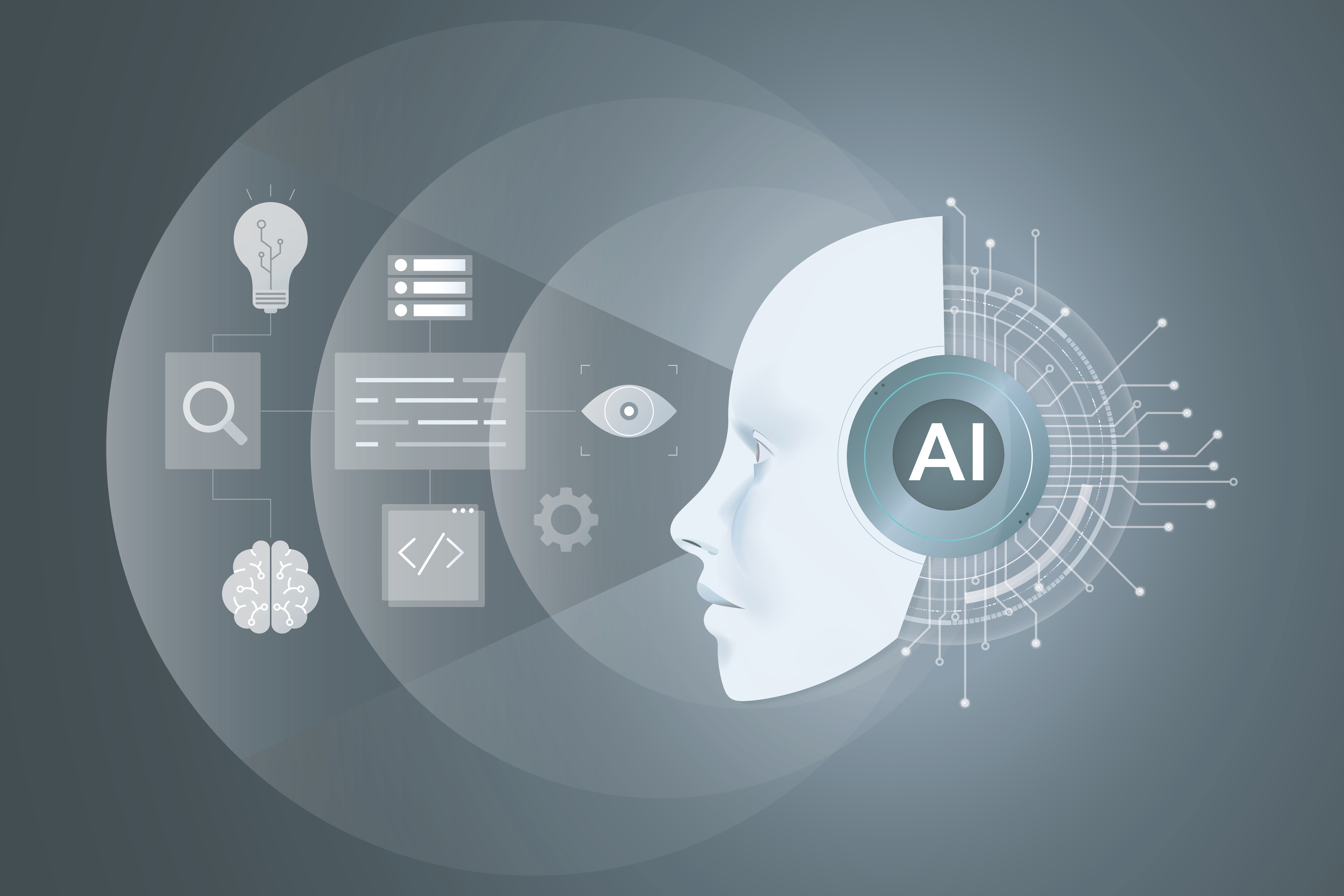Digital skill gaps: what they are and how to bridge them
Don’t let a lack of expertise stand in your organization’s way

Across all industries, skills are dominating talent discussions—and it’s easy to understand why. According to Deloitte, Pioneering businesses that were among the first to adopt skills-based strategies are enjoying an array of benefits: they’re 98% more likely to retain high performers, 52% more likely to innovate, and 47% more likely to cultivate an inclusive environment than their competitors sticking with more traditional operating models.
Although most companies are eager to reap these advantages, only 5% of executives strongly believe that they’re investing enough in helping their people learn new skills to keep up with the changing world of work. As leaders strive to upgrade upskilling and reskilling initiatives, there’s one priority that’s rising to the top of their radars: bridging digital skill gaps.
Employees will need new digital skills to harness the latest wave of technological innovations spearheaded by generative AI and advances in machine learning. Without ongoing development opportunities, digital skill gaps will hinder organizations’ transformation efforts.
What is a digital skill gap?
A digital skill gap is the difference between the digital skills employees have and the skills they need to perform their modern jobs effectively. This gap limits productivity, slows digital transformation, and highlights the need for upskilling and continuous learning in the workforce.
Right now, technology is developing at a faster rate than most workforces can keep up with, meaning the pool of skilled workers—those with the ability to utilize these new technologies—is smaller than the demand for it. This misalignment between the demand for employees with advanced skills and the supply of workers who have these sought-after competencies is what’s fueling the digital skill gap.
Why are digital skill gaps growing?
As the pace of digital innovation continues to accelerate, many companies’ upskilling and reskilling initiatives are lagging behind, leading to larger gaps between the competencies employees currently possess and the skills they’ll need to harness cutting-edge technologies.
Rapid advances in AI, robotics, and other emerging technologies are happening in shorter cycles, changing the nature of the jobs that need to be done and the skills required to do them. According to the Organization for Economic Co-operation and Development, as many as 1.1 billion jobs could be transformed by technology over the next decade.
The half-life of skills is also shrinking, meaning that information is becoming outdated more quickly than it ever was before, particularly technical knowledge. While the half-life for general skills is thought to be about 5 years, the half-life for technical skills is just 30 months. Consequently, employees must participate in upskilling and reskilling initiatives frequently to ensure their digital expertise is up to date.
What are the consequences of digital skill gaps?
Since technical knowledge will be crucial for enhancing performance and improving business outcomes, no organization can afford to sit back and let digital skill gaps grow. Given that only 9% of employees currently have high levels of digital dexterity, it’s evident that most organizations have a long way to go when it comes to building these skills. Yet, prioritizing them will likely pay off, since high digital dexterity in an organization increases the likelihood of successful digital transformation by 3.3 times.
Organizations that don’t create pathways for continuous learning and development also miss out on the gains in productivity and retention that accompany most skill-building initiatives. 93% of CEOs who’ve introduced upskilling programs report seeing an increase in productivity and an improvement in talent acquisition and retention.
4 steps leaders can take to bridge digital skill gaps
There are several steps that leaders can take to upgrade skill-building initiatives and ensure their workforces possess the knowledge needed to harness the next wave of technological innovations.
#1. Understand where workforce capabilities exist
Before leaders can begin devising strategies to bridge digital competency gaps, they need an in-depth understanding of the skills their organization has. Traditionally, this information has been hard to come by, since skills insights are usually siloed amongst a few different HR systems. Most skills inventories are also updated manually, which means that the information they present may be outdated or fail to capture the full range of an employee’s capabilities.
Rather than guessing where knowledge lies, leading companies are harnessing workforce intelligence to gain an in-depth picture of workforce skills that updates in real-time. These tools harness data from employees’ CVs and LinkedIn profiles to infer skills and proficiency levels and take recency into account to accurately assess how up-to-date various knowledge is.
#2. Increase access to experiential learning opportunities
While content-based courses are an important part of training, employees also need chances to put the lessons they’re learning into practice. Projects, gigs, and mentorships give workers the on-the-job experience they need to utilize new digital skills with confidence.
To ensure every employee can tap into experiential learning opportunities, many organizations are harnessing talent marketplaces to generate suggestions for projects, gigs, and full-time roles based on the skills employees have and the knowledge they wish to acquire.
#3. Create a single destination for employee development
Even when leaders invest in pathways for learning and career development, many employees struggle to take advantage of them because these resources are dispersed amongst a wide array of tools and systems. Since companies have an average of 70 different applications for employee development, there’s often uncertainty about where to go to find various skill-building resources.
Instead of letting siloes and bottlenecks hold people back, leading companies are utilizing an opportunity hub to centralize all volunteering, learning, and training resources—in turn encouraging every employee to take advantage of them.
#4. Put employees at the helm of their career progression
When it comes to skill-building, all initiatives aren’t created equally. To get the most value out of upskilling and reskilling, leaders must ensure that learning opportunities align with both business needs and employee ambitions.
Employees who are personally invested in the learning opportunities they’re participating in will be more motivated to take skill-building efforts to the next level. By harnessing career pathing tools, employees and managers can come together to identify the skills workers should prioritize to reach their professional goals while making strides towards accomplishing business objectives.




